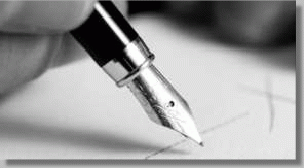If an exam aims at checking knowledge, it is nonetheless essential to know how to present your exam paper properly.
Of course, The content is the most important, and we devote the overwhelming majority of our articles to it. However, the form remains a real criterion of quality: if you do not know how to write and present your paper, you are wasting the knowledge you have acquired. Here’s how to make the most of it so that you can communicate it effectively to those who will read it, including the graders.
→ How to be productive: 16 hyper-effective tips
Presenting an assignment:
- 1. Plan titles should not appear (for example, never write, “1. A) B) 2. A) B)”
- 2. It should still be easy for the corrector to understand your plan, the structure of your paper. The best thing to do is to write your idea (not just a title, but a sentence) and to mark it with line breaks and indents.
- 3. Think of writing a transition between each major part, a small sentence that explains the link between what you have explained previously and what you are going to write next.
Writing and spelling:

Careful presentation of your papers increases your chances of success at Sciences Po.
- 4. It is particularly important to take care of your handwriting: ideally, your handwriting should be standard, without embellishments, not too wide or too narrow. Line up at the left and right margins. Of course, I always use dots and not circles (as in the I).
- 5. No erasures: even the eraser, when rewriting on it with the pen, makes marks.
Spelling, grammar and expression:
- 6. Always write with accents, do not forget them. The French Academy recommends the accent on capital letters, even if there is debate among teachers, always put the accents.
- 7. Ban familiar language, jargon, dialects
- 8. Ban all empty formulas , e.g. “men have always”
- 9. Concerning conjugation, do not use the future tense.
- 10. Use a varied and adapted vocabulary
- 11. Of course, respect the agreements, especially when the COD is placed before the verb
Formatting:
- 12. Underline book titles, titles of paintings, titles of movies, plays, poems, titles of sculptures. Underlining allows for the italics that would be needed if the text were printed, but since italics are not easy to reproduce, to be safe it is requested to underline in handwritten copies. You can write in italics but always underline at the same time, to show the proofreader your respect for conventions, because italics are never easy to render in handwriting.
- 13. Place in quotation marks only the titles of articles (e.g. newspapers), and, of course, quotations.
- 14. Abbreviations follow precise rules in French. For example, the abbreviation for Monsieur is always written by M., not Sir.
- 15. Numbers are written in full, except for years or percentages.
- 16. The hyphenation of words at the end of lines follows some rules that must be respected (for example, cut between two syllables, or two identical consonants)
- 17. Define acronyms for the first time you use them so you can use them later. Example: Union of Soviet Socialist Republics (USSR)
Read it again:
- 18. If all goes well and you have time left, you can proofread. Correct any spelling or grammatical errors you see.
- 19. Take care of the presentation, by checking that the titles have been underlined for example, by having indicated the subject, as well as the number of the question.
- 20. Find the passages that are illegible, to be able to rewrite them better, or to clear them up with the eraser when they are ink blots
→ Tips for passing the General Knowledge at Sciences Po
Originally posted on 8 February 2021 @ 11:01

Thank you for your reply! Well I think that if the opportunity arises I won’t be able to resist the temptation to write a word in Russian… Although I don’t think it really brings anything, on the other hand I say to myself that knowing the term in the original language proves that you have mastered it and really understand it. Well I’ll see in 3 days! 🙂
@Eléonore : Hello, you got it right. We can write terms or works in the original language, and add the translation if it is not obvious. For the different alphabet, indeed it may sound pedantic as you say, but we think you can still write with the original alphabet if you wish. The important question is: “does this add value to the copy, or does it better convey information”? Another way of asking the question, perhaps simpler, is: “how would this be written in a textbook or a history book?”
Can we put foreign terms / works (with their translation if it is not obvious? For a different alphabet, can we write the words in the other alphabet with the Latin transcription? (in this case in Russian). On the one hand I tell myself that it always feels good, but on the other that it may be a bit pedantic and useless
Are we sure we shouldn’t write down our outline on the copy? In The School/La Démocratie by David Ferrière it is advisable to note it…